#South Australian wildlife
Text
Blanche Harbour
Dear Reader:
There is a White-browed Babbler fossicking in the leaf litter which has accumulated under a small tree. Several more birds are perched in a nearby Lemon-flowered Gum watching me warily. Most of the Babblers I have encountered in this region seem to feed on the ground looking for insects, spiders, small lizards as well as fallen fruit and other vegetation.
White-browed Babbler…

View On WordPress
#Australian birds#Australian parrots#Australian wildlife#Babbler#Blanche Harbour#Blue Bonnet#grey kangaroo#Gum trees#mangroves#parrot#saltbush#South Australian birds#South Australian tourism#south australian travel#South Australian wildlife#wildlife photography
2 notes
·
View notes
Text
Doing sleepy lizard fieldwork in the Mid Murray today involved bountiful encounters with goofy fellas as usual
This guy is somehow missing the keratin on most of his large tail scales, revealing the bony scutes (osteoderms) beneath. We’re not exactly sure how this occurred, hopefully he’s not scuffed up too bad, but it is quite cool to look at


Then there’s grumps over here, sucking on his pacifier. We named him Cupcake after his delightful personality


Cupcake is now getting clamped because he’s naughty and bit someone (actually just taking a measurement of head depth)
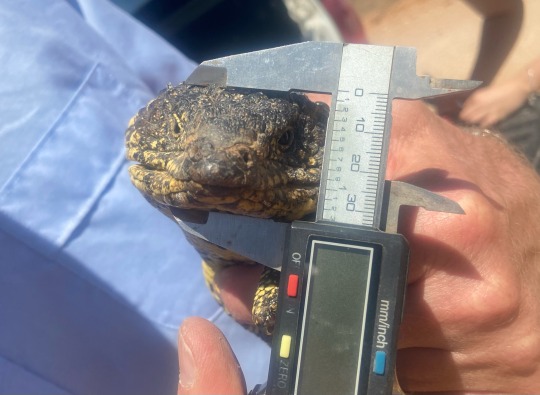
Polite gentleman patiently getting his tail measured (not a sleepy lizard, doesn’t want to be here)
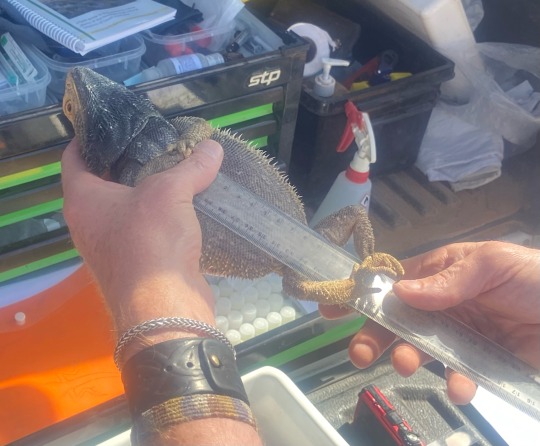
#south australia#australian wildlife#wildlife#reptile#reptiles#lizard#lizards#skinks#bearded dragon#shingleback#fieldwork#herpetology#my stuff
486 notes
·
View notes
Photo

Australian Ringneck Parrot, South Australia
#Australian birds#parrots#Australian parrots#nature#wildlife#Wild Birds#South Australia#australia#Tropical
153 notes
·
View notes
Text

White-faced heron
169 notes
·
View notes
Text

Common Drone Fly (Eristalis tenax)
Family: Hoverfly Family (Syrphidae)
IUCN Conservation Status: Least Concern
Present and abundant on every continent except Antarctica, the Common Drone Fly is one of several hoverfly species that exhibit Batesian mimicry (a form of mimicry in which a harmless species has evolved to mimic the appearance of a toxic or otherwise dangerous species,) with its fluffy body and yellow-and-black striped abdomen giving it a bee-like appearance that deters most would-be predators despite lacking any real defensive abilities itself - upon closer inspection, it can be easily distinguished from a true bee owing to its thick body (bees have a narrow "waist" between their thorax and abdomen,) short, stubby antennae (bees generally have longer, flexible antennae) and wings (bees have 4 overlapping wings, while flies have only two wings.) Feeding on nectar and pollen, males of this species claim small flower-filled areas as their territories and guard them fiercely, hovering in mid-air to survey their surroundings and chasing off any similarly-sized insects that come close. Females travel between these territories searching for food and mates, and after mating they lay clutches of sticky oval-shaped eggs near bodies of water; the larvae, known as rat-tailed maggots, are aquatic and feed on detritus and bacteria, breathing air through an extremely long tail-like structure that extends from their abdomen. After reaching a suitable size and age the larvae crawl onto land and pupate in sheltered areas, and upon reaching adulthood they may live for several years, hibernating in rocky cracks or rotting wood to survive the winter.
--------------------------------------------------------------------------
Image Source: https://www.inaturalist.org/taxa/55719-Eristalis-tenax
#Common Drone Fly#drone fly#fly#flies#hoverfly#insect#insects#zoology#biology#entomology#animal#animals#African wildlife#european wildlife#Asian wildlife#Australian wildlife#North American wildlife#South American wildlife#cosmopolitan wildlife#wildlife
32 notes
·
View notes
Photo
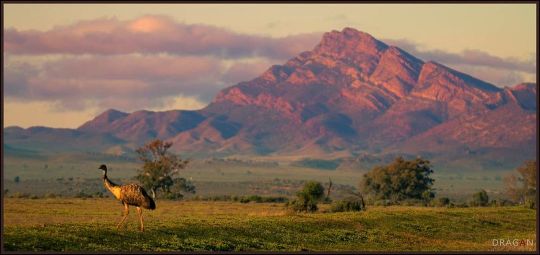
Emu, Flinders Ranges, South Australia
photo credit: Dragan Photography
35 notes
·
View notes
Photo

Home on the range: red-tailed phascogales take a 450km journey to new digs in NSW
Image: Adelaide Zoo
#adelaide zoo#photographer#australian geographic#red-tailed phascogales#animal#mammal#wildlife#nature photography#new south wales#australia
14 notes
·
View notes
Text
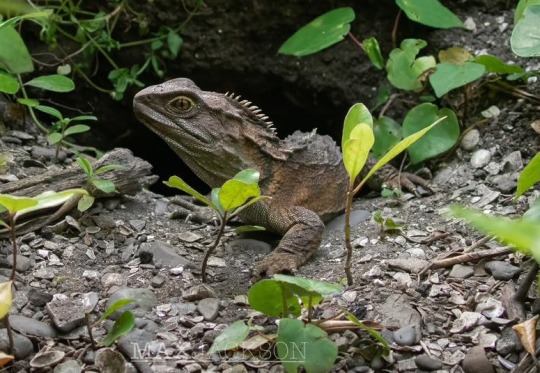

Tuatara (Sphenodon punctatus), family Sphenodontidae, order Rhynchocephalia, New Zealand
There were once 2 recognized species of Tuatara, but now they are considered to be just one species.
This is not a lizard.
The only member of the reptile group Rhynchocephalia still around. All other species went extinct millions of years ago.
Tuataras were eradicated by humans and introduced species from the main islands of New Zealand, and now only occur on small islands near the North Island and far north of the South Island.
This is one of my very favorite animals.
photograph via: Australian Wildlife Encounters
296 notes
·
View notes
Text
Dreams about crocodiles
I'm used to dreaming really weird shit. Like REALLY weird.
Among all these dreams it's not uncommon for crocodiles to appear in some form or another, and while I usually don't usually remember them, some have stuck in my mind so much that I've taken them to art.

I call this one "Hold Araripesuchus gentle, as an arepa" (Arari, Arepa… get it?… nevermind).
The context and why a genus of notosuchus from the Cretaceous of Gondwana had ended up in what appeared to be a wildlife recovery center in South Africa (The environment was savannah and there were other animals such as rhinos, giraffes, zebras…) is unknown.
These little critters were running like lizards all over the place until I managed to grab one and hold it like in the picture.
I swear they looked so real that at no time did I question their existence (Although I suspect my mind used Paleosuchus to fill in the blanks and make them more believable).

The second is somewhat more recurring. In it, I work on a crocodile farm in Northern Australia.
While feeding the freshies (Crocodylus johnsoni , the Australian freshwater crocodiles) a huge male scrambles up and rips off half of my rigth hand.
Ironic that in a place with saltwater crocodiles it is a freshie who tries to kill me, but that's life I guess.
97 notes
·
View notes
Text
Flag Wars Round 1: Prelims
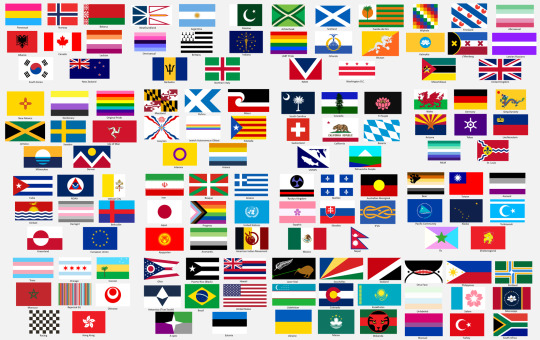
Welcome to the first round of the Flag Wars! I received so many submissions, and I tried to include almost all of them in the competition. The first round is the preliminaries, where there will be 16 brackets each with 8 or 9 flags. The two most voted flags in each bracket will go on to the next round. Sadly, so many amazing flags will be voted out in the first round. This competition is about which flag has the best design rather than meaning, so please vote for the flag that you think looks the best rather than voting on how meaningful the flag is to you.
Here are the brackets for Round 1:
Round 1:
Group A:
Bracket 1:
Pansexual
Norway
Belarus
Albania
Canada
Lesbian
South Korea
New Zealand
Bracket 2:
Newfoundland
Argentina
Pakistan
Omnisexual
Brittany, France
Indiana
Barbados
Northern Italy
Bracket 3:
Achterhoek, Netherlands
Scotland
Fuente de Oro, Colombia
LGBT Pride
Orlando, Florida
Bhutan
North American Vexillological Association
Washington D.C.
Bracket 4:
Wiphala
Friesland
Abrosexual
Kalmykia, Russia
L'Manberg (Dream SMP)
Latvian Russians
Mozambique
United Kingdom
Group B:
Bracket 5:
New Mexico
Nonbinary
Original Pride
Jamaica
Sweden
Isle of Man
The People's Flag of Milwaukee
Denver, Colorado
Bracket 6:
Maryland
Ruhnu, Estonia
Māori
Assyrian
Jewish Autonomous Oblast, Russia
Estelada (Catalonian Independence)
Intersex
Aroace
Bracket 7:
South Carolina
Cascadia (Doug Flag)
Yi People
Switzerland
California
Bavaria, Germany
U.S. Fish and Wildlife Service
Pehuenche People
Bracket 8:
Wales
Germany
Qing Dynasty
Arizona
Tokyo
Liechtenstein
MLM
St. Louis, Missouri
Group C:
Bracket 9:
Cuba
National Oceanic and Atmospheric Administration
Vatican City
Kiribati
Demigirl
Bohuslän, Sweden
Greenland
European Union
Bracket 10:
Iran
Ikurriña/Basque
Greece
Japan
Progress Pride
United Nations
Kyrgyzstan
Aromantic
American Indian Movement
Bracket 11:
Ryukyu Kingdom
Quebec
Australian Aboriginal
Sapphic
Slovakia
International Federation of Vexillological Associations
Mexico
Nepal
Bracket 12:
Bear
Taiwan
Asexual
Pacific Community
Alaska
Turkmeneli, Iraq
Oz (The Wizard of Oz)
Zheleznogorsk, Russia
Group D:
Bracket 13:
Trans
Chicago, Illinois
Concón, Chile
Morocco
Rejected EU
Okinawa
Racing Flag
Hong Kong
Bracket 14:
Ohio
Black flag of Puerto Rico
Hawaii
Antarctica True South Proposal
Brazil
United States
A-spec
Estonia
Bracket 15:
Laser Kiwi
Seychelles
Sealand
Uzbekistan
Colorado
Kazakhstan
Ukraine
Macau
Wakanda
Bracket 16:
Orca Face (People’s Flag of Seattle)
Philippines
Portland, Oregon
Unlabeled
Salem, Oregon
Mississippi
Bisexual
Turkey
South Africa
81 notes
·
View notes
Text
Meadows to Cox Scrub along Bull Creek Road
Meadows to Cox Scrub along Bull Creek Road
White-cheeked Rosella
Dear Reader:
There is a layby just a 400 meters along Bull Creek Road which starts just outside Meadows on the road to Ashbourne. It is a unique viewing point as the road also passes through a cutting which exposes the root systems of a large eucalypt. The layby overlooks a steep hillside providing a direct line of sight into the canopies of the surrounding trees. I can…

View On WordPress
#Australian birds#Australian wildlife#butterflies#grey fantail#historic bridge#Little Raven#old inn#South Australian birds#South Australian tourism#south australian travel#South Australian wildlife#superb fairy wren#wedge-tailed eagle#White-cheeked Rosella#wildlife photography
3 notes
·
View notes
Text

the child seeks refuge
Spinifex Hopping-mouse (Notomys alexis) - Bon Bon Station, SA, November 2023
#just got back from this trip so I’ll probably be posting stuff for a little while#south australia#outback#australian wildlife#wildlife#mammals#rodent#rodents#mice#mouse#wildlife photography#fieldwork#my stuff
103 notes
·
View notes
Photo
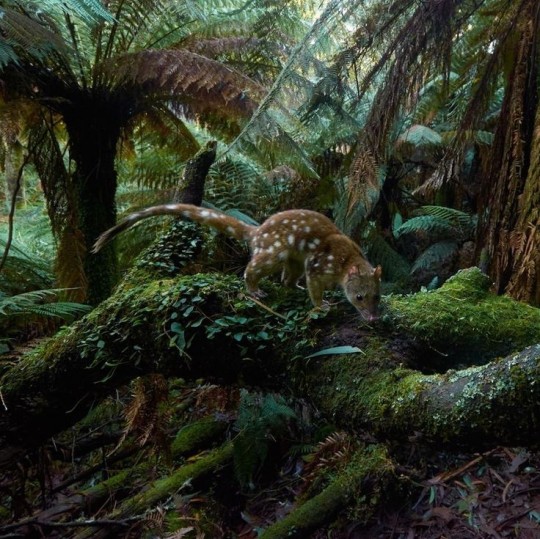
Spotted-tail Quoll, Monga National Park, New South Wales, Australia by David Gallan
#Tropical#jungle#rainforest#Australia#travel#nature#ferns#Tropics#new South Wales#forest#Australian animals#wildlife#Quoll#spotted-tail quoll#Monga National Park#animals#wild animals
1K notes
·
View notes
Text
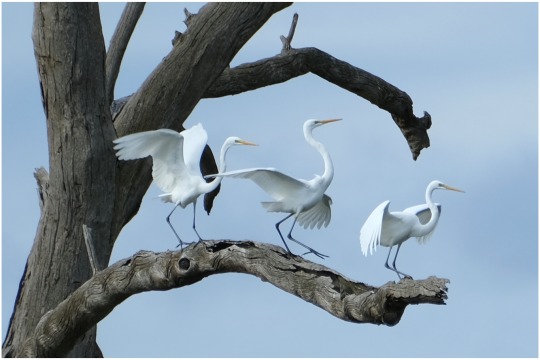
Great egrets
150 notes
·
View notes
Photo
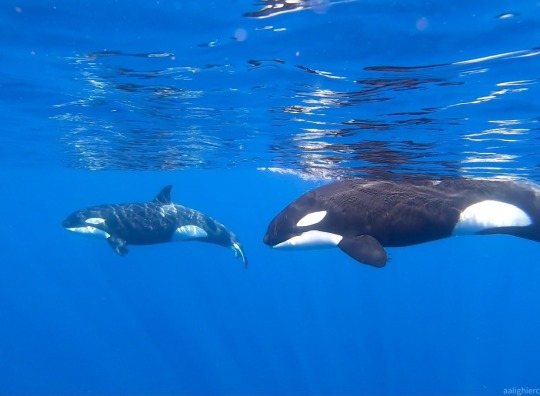
Orca (Orcinus orca)
Family: Marine Dolphin Family (Delphinidae)
IUCN Conservation Status: Data Deficient
Found in open oceans worldwide from the tropics to the poles, the Orca (also known as the Killer Whale, a mistranslation of an early Spanish name for this species, “asesina de ballenas”, meaning “whale killer”) is the largest living species of dolphin, and one of the most extensively studied of all cetaceans. Like most cetaceans Orcas live in complex social groups known as pods, but the makeup of these pods is unlike that of any other mammal in that individuals of both sexes typically remain with their mothers for their entire lives: each pod is led by a dominant female (known as a matriarch) who guides the pod in finding food, and upon her death a matriarch will be succeeded by one of her daughters. All of the males in a pod (which can be distinguished from females due to their longer dorsal fin) will be a son of one of the females within it, and while they may temporarily separate from their birth pod to mate with females from other pods they will almost always return afterwards. Different populations of Orcas differ greatly in the strategies they use to hunt and the vocalizations they use to communicate with one another, with some researchers having likened these differences to the variety of languages and cultures seen in humans. Owing to their intelligence, large size and cooperative hunting strategies, Orcas are tertiary consumers (apex predators) in every ecosystem they appear in and have been known to prey on animals as large as Blue Whales and other tertiary consumers such as Great White Sharks (although smaller prey such as sea turtles, smaller dolphins, seabirds, pinnipeds and a range of fish species are more typical prey.)
-----------------------------------------------------------------------------
Animal Advent Calendar - Day 2
Image Source: https://www.inaturalist.org/taxa/41521-Orcinus-orca
#December 2nd#Orca#Orcas#Killer Whale#Killer whales#cetaceans#zoology#biology#marine biology#Delphinidae#animal#animals#marine wildlife#african wildlife#north american wildlife#south american wildlife#asian wildlife#australian wildlife#european wildlife#antarctic wildlife
115 notes
·
View notes
Text
Mark Wootton and his wife, Eve Kantor, were the carbon-neutral pioneers of Australia’s red meat industry.
Years before the Paris agreement to keep global heating below 1.5C, and a decade before the Australian government committed to reaching net zero emissions, their family farm in south-western Victoria was declared carbon-neutral.
“In the early 2010s we were pretty cocky that we had conquered this thing,” Wootton says. “We thought we’d cracked the formula.”
Jigsaw Farms, a mosaic of lush pastures, eucalypt plantations, wildlife corridors and wetlands about 250km west of Melbourne, near the town of Hamilton, was the envy of the industry. It was lionised by the media, a favoured photo opportunity by politicians and held up by the red meat sector as a vision of the future.
The farm’s carbon-rich soils, 20% of which were forested, sequestered enough CO2 to offset its annual emissions from wool, lamb and beef production.
Or at least it did. The latest report tracking Jigsaw’s emissions, which is now undergoing peer review, confirmed that since about 2017 – the same year the industry body Meat and Livestock Australia (MLA) announced a target of net zero emissions by 2030 – Jigsaw Farms has been emitting more greenhouse gases than it could sequester.
“Cows and sheep are still there producing the same amount of methane [every year], but the trees grow up and carbon sequestration slows down,” says the report author, Prof Richard Eckard.
Eckard is an agricultural economist and the director of the school of agriculture, food and ecosystem sciences at the University of Melbourne. He became involved in measuring Jigsaw’s emissions a decade ago.
The 3,378-hectare farm spans six titles, bought by Wootton and Kantor between 1996 and 2003. Hardwood timber plantations cover 295 hectares, 24 hectares is remnant forest and a further 268 hectares are set aside for biodiversity. It hosts a fine wool merino operation with about 20,000 ewes, and 550 head of cattle.
Initially, the hundreds and thousands of trees they planted, combined with a switch to perennial grasses, significantly increased the amount of carbon sequestered on the property.
But those trees have now matured and passed peak sequestration, meaning they absorb less C02 year-on-year, and the soil is so carbon rich it can’t sequester any additional C02 from the atmosphere.
“Ten years later it all slows down because carbon saturation,” Eckard says. “It’s just the law of diminishing returns.”
The latest Jigsaw study estimated that in 2021, the farm sequestered 70.3% to 83.2% of its annual emissions. By 2031, as the farm’s forests grow older, models predict it will absorb just over half of what it did when carbon sequestration peaked in 2012.
The dilemma Jigsaw now faces reflects the broader challenge of decarbonising Australia’s red meat industry, Eckard says.
The industry claims it has reduced its emissions by 65% compared with 2005 levels, but this reduction relies on recorded decreases in deforestation and increases in forest regrowth, which some analysis suggests is overstated.
“Carbon sequestration through forestry is a short-term buy out of trouble,” Eckard says. “You can plant your way out of trouble and, like Jigsaw, get seven years of net zero, but ultimately, unless you do something about the methane, you’re not going to stay net zero.”
Climate neutrality v the ‘seaweed solution’
Other efforts to reduce the industry’s carbon footprint have focused on attempting to reduce the amount of methane expelled from the rumen, which accounts for 80% of the sector’s emissions. MLA has put more than $180m towards the problem, with no solution forthcoming. The results from the longest running commercial trial of a seaweed cow-feed, which aimed to cut methane by more than 80%, were lacklustre.
Selective breeding and dietary changes can help, says Eckard, but it’s slow going.
“It took the animal 50m years to evolve to produce meat and eat grass the way it does,” he says. “That can’t be overcome in three-year funding rounds.”
But he says that if producers adopt current best practices that will reduce their emissions intensity per kilogram of meat produced while research finds the “seaweed solution”.
On Jigsaw Farms, high reproductive rates, fast-growing livestock due to genetic selection and ample feed, and grazing stock at double the density of other farms in the district helps reduce the emissions that go into producing each animal.
“If that lamb or calf grows faster, so it gets to market quicker, so it grows faster, so, to be brutal, it can die and be eaten – your carbon intensity is dropping,” Wootton says.
This allows Jigsaw to sell its wool, lamb and beef at a premium in a market that is increasingly looking for farmers who can demonstrate strong environmental credentials.
This is particularly important for the export-focused Australian market, Eckard says. Seventy per cent of Australian-grown beef is sold into global supply chains ruled by international corporations, all of whom have net zero targets.
That’s the impetus behind the MLA’s “world leading” net zero target. This month Guardian Australia reported that the industry body described the target as “aligning the industry” towards improvement and said it did not need to be met, though it remains committed to the goal. Environmental scientists say reporting on the goal is based on unreliable land clearing data.
David Jochinke, the president of the National Farmers Federation, says the target is about the “aspiration” towards decarbonisation.
“We’ve always said at the NFF, we’re not going to reduce production in an attempt to get to net zero,” he says. “Will we make it? I’m not really sure, but we are going to give it a red hot go.”
A 2023 CSIRO report found the industry would fall short of the net zero goal and recommended a “climate-neutral” target be adopted instead, which would theoretically be achieved by reaching a point where the sector no longer causes any additional warming to the planet.
Australia’s peak cattle body, Cattle Australia, has also called for a shift to climate neutrality. But both Eckard and Wootton say the industry shouldn’t change course.
“I fear that if the industry fiddled with the metric what they would be effectively saying is ‘methane is no longer an issue so we don’t have to worry about it’,” Eckard says.
The director of the Australian National University Institute for Climate, Energy and Disaster Solutions, Mark Howden, says that unachievable or “false [climate] targets” are ineffective and can alienate both industries and the public.
He says the red meat sector’s goal is “in a sense the wrong target”. “We do need to go net zero in terms of C02, but in the case of methane we need to reduce it by about two-thirds in the long term to effectively meet the Paris agreement,” he says.
Wootton says the benefits of their regenerative approach to farming persist even if the farm’s carbon accounts are now in the red.
They did not initially set out to be carbon-neutral. The timber plantations were established on Jigsaw Farms to offer an alternative source of income. They planted permanent native vegetation to encourage biodiversity and shelter belts to protect livestock, and dug deep dams so they would always have a secure water supply.
A bird survey in 1996 found 46 bird species on the land. Today, there are 174. The land is healthier – that is, ironically, why carbon sequestration has stabilised.
“People come to us and go, shit, if they can’t go carbon-neutral, what does that mean for us,” Wootton says.
“It means you’ll have to do some of what we’ve done, do things differently from what we’ve done, and do some other things that we don’t even know we can do yet.
“There’s no silver bullet here, but there’s some silver buckshot, hopefully.”
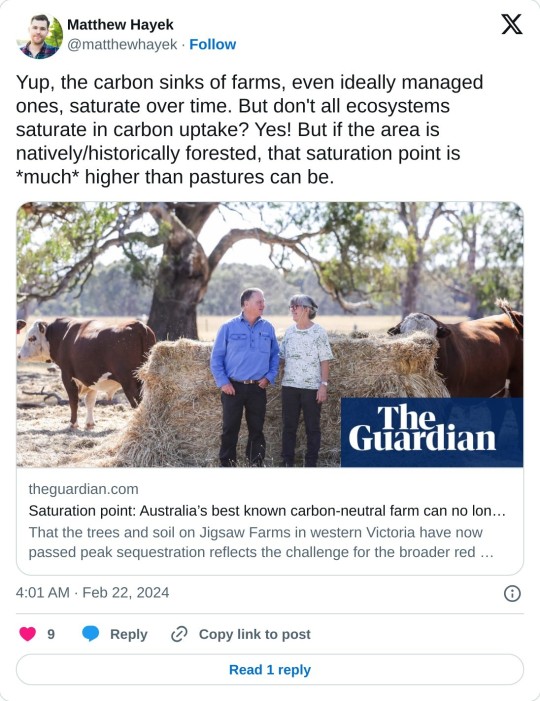

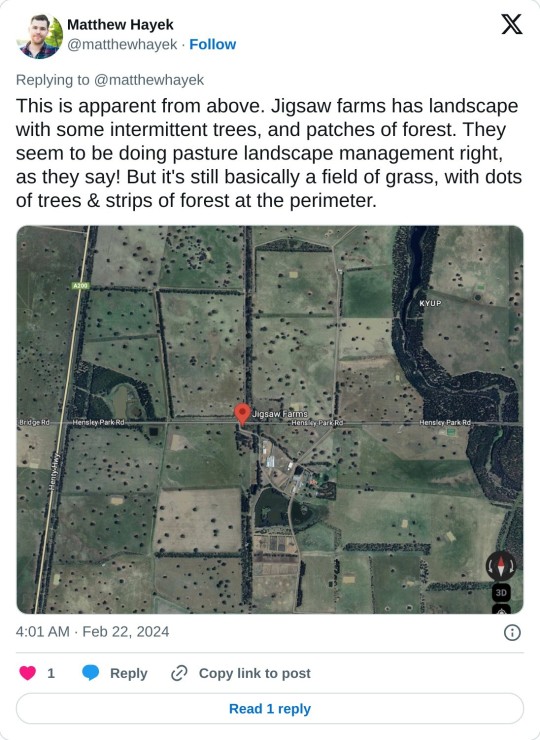




10 notes
·
View notes